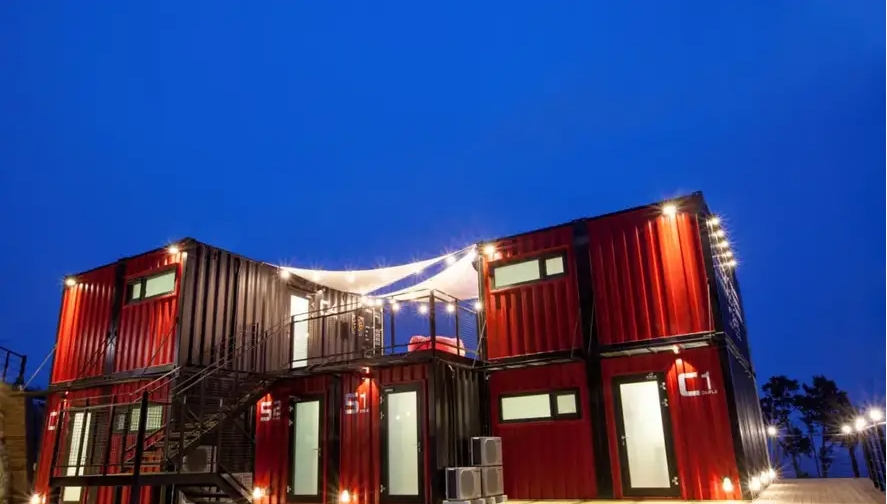In recent years, container houses in the Foshan region have emerged as a unique architectural form, gradually capturing the attention and favor of the public. This innovative residential approach possesses many distinctive features while also encountering certain challenges. This article will delve into the advantages and drawbacks of Foshan container houses, providing a comprehensive understanding of this emerging architectural form.
Advantages:
Environmentally Friendly and Energy Efficient: The construction of container houses typically involves the use of discarded shipping containers, contributing to a reduction in the construction industry's demand for new materials. This reuse helps minimize resource wastage, aligning with environmental conservation principles. Additionally, container houses exhibit lower energy consumption during construction and transportation, showcasing energy-saving advantages.
Speed and Convenience: Compared to traditional buildings, container houses can be constructed at a faster pace, often taking only weeks or a few months, significantly shortening the construction period. This makes container houses an ideal choice for situations requiring emergency temporary housing, such as disaster relief and construction site dormitories.
Structural Stability: Shipping containers are inherently designed to bear substantial loads, providing a sturdy structural foundation. This structural robustness enables container houses to perform well in the face of natural disasters like earthquakes, offering relatively high levels of safety.
Economical: Building houses using containers is more cost-effective compared to traditional construction methods. Particularly in projects requiring a large number of similar structures, the scalability and assembly-line construction of container houses make them more economically viable.
Drawbacks:
Space Limitations: The basic structure of container houses is that of elongated containers, leading to inherent limitations in interior space. For residential needs requiring larger and more expansive spaces, multiple containers may need to be combined, increasing the complexity of design and construction.
Maintenance Costs: Container houses may require more frequent maintenance in certain aspects. Since containers are primarily made of metal, they are susceptible to corrosion and rust, necessitating regular anti-corrosion treatments and maintenance, thereby increasing upkeep costs.
Monotonous Appearance: The structure and appearance of containers can be relatively monotonous, lacking the diverse external designs seen in traditional buildings. For individual users who value aesthetic appeal and uniqueness, this may be considered a limitation.
Thermal and Acoustic Challenges: Due to the characteristics of container materials, their thermal and acoustic insulation properties may be relatively poor. In regions with extreme climate conditions, the application of additional insulation materials may be required to enhance the comfort of housing.
In conclusion, Foshan container houses exhibit formidable competitiveness in specific scenarios due to their unique advantages. However, when making choices about their usage, a careful consideration of both advantages and disadvantages is essential to ensure that the final architectural decision aligns with the practical requirements of the project.
